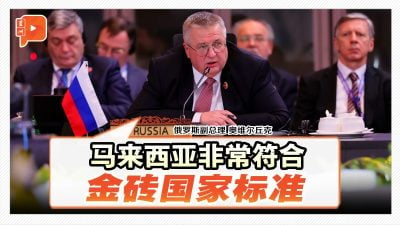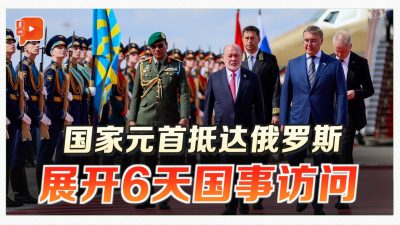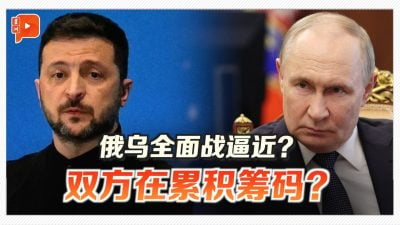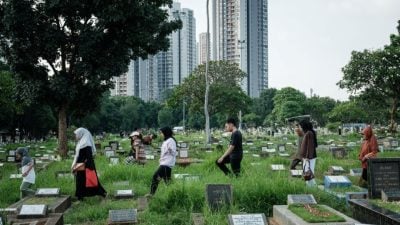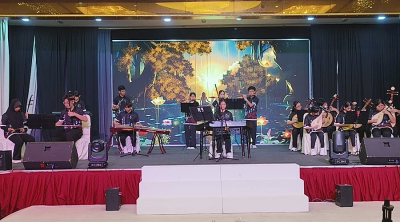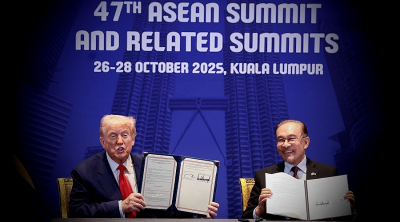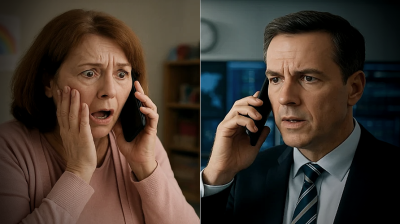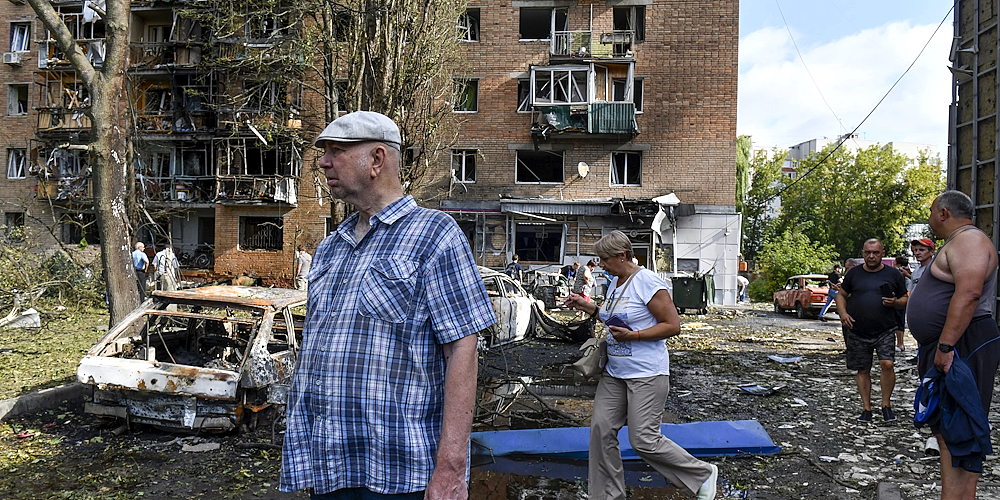
The swift Ukrainian incursion into Russia’s Kursk region that began last week has been the largest cross-border raid by Kyiv’s forces in the nearly 2 ½-year war, and has exposed Russia’s vulnerabilities and dealt a painful blow to the Kremlin.
The Russian military has thus far struggled to deal with the surprise attack, which has led tens of thousands of civilians to flee the region.
For Ukraine, the raid has provided a much-needed boost to morale at a time when its undermanned and under-gunned forces are facing relentless Russian attacks along the more than 1,000 kilometre front line.
Here’s a look at the Ukrainian raid and its implications:
How has the attack unfolded?
Kyiv’s troops poured into the Kursk region from several directions last Tuesday, quickly overwhelming a few checkpoints and field fortifications manned by lightly armed border guards and infantry units along the region’s 245-kilometre frontier with Ukraine.
Unlike previous raids conducted by small groups of anti-Kremlin Russian volunteers fighting alongside Ukrainian forces, the incursion into the Kursk region reportedly involved units from several battle-hardened Ukrainian army brigades.
Russian military bloggers reported that Ukrainian mobile groups comprised of several armoured vehicles each quickly drove dozens of kilometers into Russian territory, bypassing Russian fortifications and sowing panic throughout the region.
Savill said there’s evidence that up to 10,000 Ukrainian troops from at least four brigades — and possibly more — being involved, and that they’re using Western-provided equipment, including infantry fighting vehicles.
The Ukrainian forces have widely used drones to strike Russian military vehicles and deployed electronic warfare assets to jam Russian drones and suppress military communications.
While small Ukrainian mobile groups roam the region without trying to consolidate control, other troops reportedly have started digging defensive fortifications in certain areas, including the western part of Sudzha, a town about 10 kilometres from the border.
How is the Russian military responding?
Caught off guard, Russian troops failed to mount a quick response. With the bulk of their army engaged in the offensive in Ukraine’s eastern Donetsk region, few troops were left to protect the Kursk border area.
The Russian units that were there consisted mostly of poorly trained conscripts who were easily overcome by seasoned Ukrainian units, according to Russian military bloggers. Some conscripts were captured.
The manpower shortage led Russia’s military command to initially rely on warplanes and helicopter gunships to try to counter the attack.
Advancing Ukrainian forces managed to down at least one Russian helicopter damaged another, according to Russian military bloggers.
Russian reinforcements, including elite special forces units and hardened Wagner mercenaries, have started to arrive in the Kursk region, but so far they appear to have failed to dislodge the Ukrainian troops from Sudzha and other areas.
Some of the newly arriving troops appear to have lacked combat skills and suffered casualties.
In one example, a convoy of military trucks carelessly stopped on the roadside near a combat area and was pummelled by Ukrainian fire.
The Russian Defence Ministry said Friday that Ukraine lost 945 soldiers in four days of fighting, though it didn’t say how many Russians had died and its claims couldn’t be independently verified.
What are Ukrainian authorities saying about the incursion?
Zelenskyy confirmed for the first time that Kyiv’s forces are operating in the Kursk region and said the incursion was “purely a security issue for Ukraine.”
In a video posted Monday to his Telegram channel, Zelenskyy said the Ukrainian military was hitting back at Russian forces that had launched strikes at Ukraine from the Kursk region.
It is “absolutely fair” to attack Russian positions, including airfields and logistics used to strike Ukraine, Zelenskyy said, adding the goal of the mission was “liberation of the border from the Russian military.”
In the video, Ukraine’s top military commander, Gen. Oleksandr Syrskyi, also told the president that Kyiv’s forces control 1,000 square kilometres of the Kursk region. The claim could not be independently verified.
Zelenskyy adviser Mykhailo Podolyak suggested last week that such an operation would improve Kyiv’s hand in any future negotiations with Moscow.
“When will it be possible to conduct a negotiation process in a way that we can push them or get something from them? Only when the war is not going on according to their scenarios,” he said.
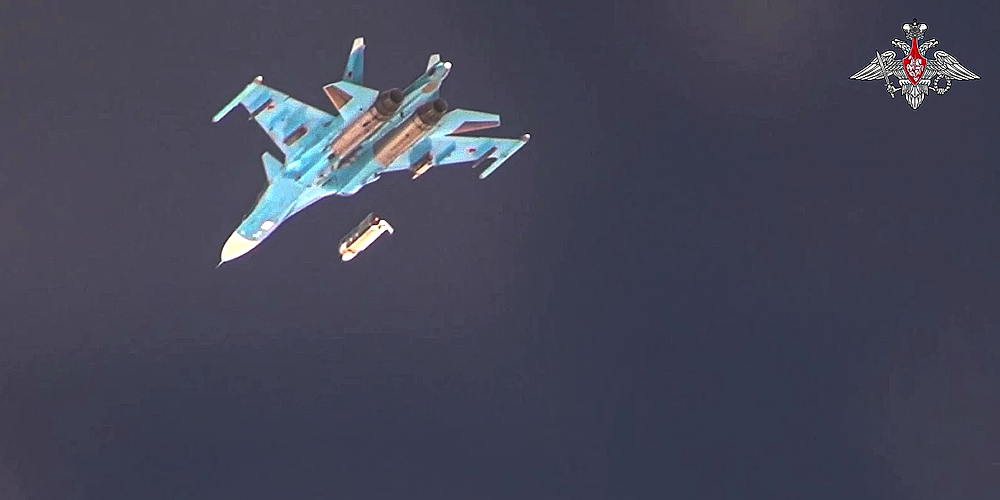
What is the Kremlin saying?
Russian President Vladimir Putin has described the incursion as a “large-scale provocation” that involved “indiscriminate shelling of civilian buildings, residential houses and ambulances.”
Putin suggested that the Ukrainian attack is an attempt by Kyiv to stop Moscow’s offensive in Ukraine’s Donbas region and gain leverage in possible future peace talks.
Speaking to his top officials Monday, he vowed that Moscow would fulfil all of its military goals.
“It’s obvious that the enemy will keep trying to destabilise the situation in the border zone to try to destabilise the domestic political situation in our country,” Putin said.
Russia’s main task is “to squeeze out, drive the enemy out of our territories and, together with the border service, to ensure reliable cover of the state border.”
The Kursk region’s acting governor, Alexei Smirnov, said Monday that Ukrainian forces had taken control of 28 settlements.
He said 12 civilians had been killed and 121 others, including 10 children, had been wounded since the start of the incursion.
About 121,000 people have left or been evacuated from combat areas, he said.
Russia announced a federal emergency in the Kursk region and declared a counterterrorism operation there and in the neighbouring Belgorod and Bryansk regions, giving local authorities more powers to quickly coordinate an emergency response and tighten security.
Russian state propaganda has focused on the Kremlin’s efforts to provide assistance to displaced residents while playing down the military’s unpreparedness for the attack.
What are Ukraine’s goals and how could the situation unfold?
By launching the incursion, Kyiv could be aiming to force the Kremlin to divert resources from Ukraine’s Donetsk region, where Russian forces have pressed offensives in several sectors and made slow but steady gains.
If Ukraine manages to hold on to some of its Kursk gains, that would strengthen Kyiv’s hand in future peace talks and could allow it to trade them for Russian-occupied Ukrainian territories.
The incursion has also dealt a blow to the Kremlin, highlighting its failure to protect the country and shattering Putin’s narrative that Russia has remained largely unscathed by the hostilities.
The incursion also has sent a strong signal to Kyiv’s allies that the Ukrainian military could seize the initiative in the war — a message particularly important ahead of the U.S. presidential election.
But despite the initial successes, the foray into Russia might cause attrition in some of Ukraine’s most capable units and leave troops in Donetsk without vital reinforcements.
Trying to establish a lasting presence in the Kursk region could be challenging for the Ukrainian forces, whose supply lines would be vulnerable to Russian fire.
“Sustaining a force of any size in Russia and defending against counterattacks will be hard, given the limited reserves available to Ukraine,” said Savill, of RUSI.
ADVERTISEMENT
ADVERTISEMENT






